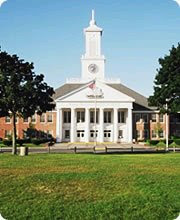
SPQR
abbr. Latin
Senatus Populusque Romanus (the Senate and the people of Rome)
Library Resources
Virtual Reference Collection
ABC-CLIO-World History/ Ancient & Medieval Eras
Bloom's Literary Reference Online
Literature Resource Center
World Book Online
Gale Student Resources in Context
Web Collection Plus Online Catalog
Academic Integrity
NoodleTools Citation System
Citation Machine
Topic one: The Roman form of government
Relevance: The play takes place in ancient Rome and is very political in nature. Therefore it is integral to understand the form of government during this time in order to understand the play.
For this research paper, find out how the Roman Senate was set up and how it compares to our form of government. In the course of your research, find the meanings and functions of the following terms and incorporate some discussion of each into your paper:
Senator, Caesar, Praetor, and Consul.
Topic two: Leadership
Relevance: Arguments are made against Caesar’s ability to lead based on the conditions listed below. It is important to examine how these conditions actually impact a person’s ability to lead.
Examine the effect a leader's domestic relationships, physical condition, and/or athletic ability may have on his or her leadership abilities. Research historical and current leaders who dealt with questions about their leadership abilities because of one or more of these issues and include an analysis and conclusion based on this information in your paper.
Topic three: Elizabethan England during Shakespeare’s time
Relevance: Shakespeare wrote his plays with current events and loyalty to Queen Elizabeth in mind. In order to understand how the play was relevant to his time, and can continue to be relevant in our time, we must examine the political climate of Shakespeare’s time
research the form of government during Shakespeare’s time, and some of the domestic issues that the government had to deal with during his era. Include a discussion of how the issues that the play tackles (governmental overthrow, monarchy vs republic, and civil war) are relevant to Elizabethan audiences.
BEFORE READING
Topic four: Suicide across different cultures
Relevance: During the play, several characters commit suicide. The attitudes toward suicide in the play may differ from those that we hold in our society, or they may mirror them. This topic is serious and we need to understand its gravity before we encounter it in the play.
Research attitudes toward suicide held by the following cultures: ancient Roman, modern Japanese, and modern American. Compare and contrast these attitudes using evidence obtained from reputable sources, and draw some conclusion about the similarities and differences between these attitudes.
This paper will be done in stages: you will NOT be able to move onto the next stage until you have completed the stage before.
1. Stage one – Topic analysis and thesis generation due- Friday 3/25
2. Stage two – Preliminary works cited page due Wednesday 3/30
3. stage three- Introduction and 1st body paragraph due Friday 4/01 (no fooling)
4. stage four- Paper due Wednesday 4/6
5. Stage five- The mystery stage due ???????






